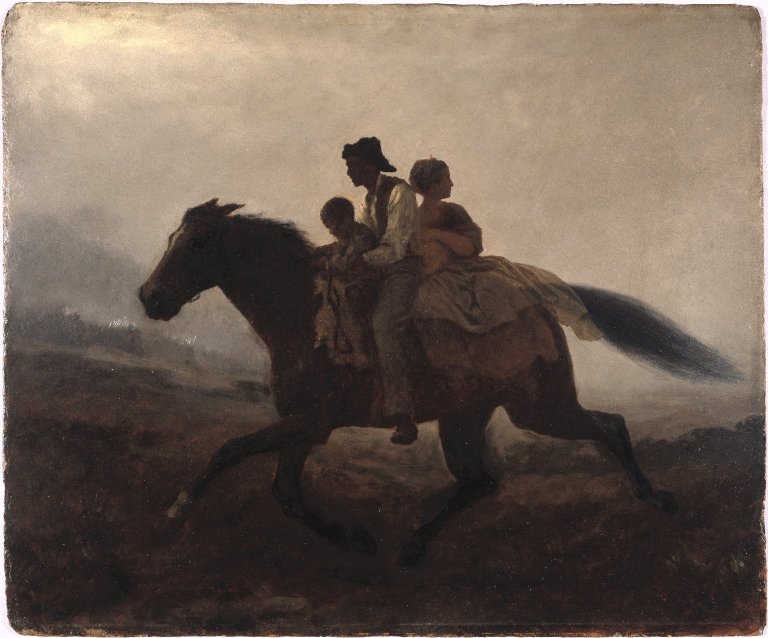
What was the underground railroad? It was a network of routes and people in the United States of America that helped slaves escape to freedom. It started in the end of the 18th century and ran until the end of the Civil War in 1865.
Slavery has existed around the world for as long as humans have fought and controlled other humans. However, it was never able to reach the industrial scale that became possible in the USA from the 17th century onwards. Portugal started shipping African slaves to their colonies in South America from the mid-1400s. Spain did the same in the 1500s and Spain’s colonies stretched up into the Florida area, putting the first African slaves in the future United States. Britain started to bring slaves across when she settled her first colonies in the Americas and the islands of the West Indies. The official starting date for slavery in the USA is given as 1619, but over a hundred thousand slaves were brought over before that. As the reliance on the crops grown in the Americas grew, and the number of ocean going sailing ships increased, the number of African slaves transported to America sky rocketed. It is estimated that 12.5 million Africans were shipped to America, but only 10.7 million arrived to become slaves. Almost two million people died on the journey. That is a terrible statistic. Britain, after a long fight, abolished slavery in 1834. The American Congress had banned the slave trade in 1808. However, they hadn’t banned slavery. Most of the slaves after this point are second or third generation slaves that were born in America. Slavery itself wasn’t banned in America until the 13th Amendment to the constitution was passed in 1865. It took a long time for slaves to be freed and even then, they were not treated as equals, but that is the date that slavery officially ended.
A lot of the United States’ economy, especially that of the southern states, was based on slavery. Huge quantities of tobacco were grown in the south and the leaves were picked by slaves. The south of the United States also produced 75% of the world’s cotton. The cotton gin was invented in 1794 and it sped up the cotton processing process, but it meant more slaves were needed to pick the cotton. By the end of the 18th century, slaves were an integral part of society, but not everybody was comfortable with that. The underground railroad sprang up because many people wanted to help free slaves.
The underground railroad had several parts. The first part were the conductors. These were the people who helped slaves escape from plantations and guided them along the route. The famous Harriet Tubman was one of the conductors. Then there were stations along the route. These were houses, churches, and even schools where the escaped slaves could hide before they continued their journey. They were private dwellings and they were owned by people who were sympathetic with the abolitionist movement. They were putting their lives at risk to protect the slaves. When the coast was clear, the escaped slaves would move on to the next station and keep going all the way to their destination.
There were many underground railroads that headed out of the southern states. Some of them went down to Mexico and some went into the west of America. A lot headed for the northern states, yet a very common destination was Canada. Canada offered the slaves a level of safety that they couldn’t find in any of the US states. In 1793 and again in 1850, the Fugitive Slave Act was passed. This act imposed harsh penalties on anyone who aided an escaped slave and created a group of commissioners to find and repatriate the slaves. The law said that any state, even the ones were slavery was banned, had to return escaped slaves. The commissioners could accuse anybody of being a slave and the people were not allowed to defend themselves in court. It was impossible to prove that they were free. The commissioners would also produce bogus documentation to say that people who were not slaves were actually slaves, and they used this method to capture a lot of free people. Canada was not a US state and was not subject to this law. Canada also gave ex slaves a lot more freedom and equality than they received even in the northern US states. Approximately 40,000 escaped slaves settled in Canada.
The underground railroad was called “underground” because the routes and the stations were supposed to be secret. However, many plantation owners hired groups of people to recapture slaves and they generally knew what routes the escaped slaves would take. They only had to lie in wake and they could recapture them.
Despite the dangers, the people who ran the underground railroad felt that they had to do something to help the slaves. It is estimated that in the life of the underground railroad, over 100,000 slaves were helped to freedom. And this is what I learned today.
Sources
https://www.nps.gov/subjects/undergroundrailroad/what-is-the-underground-railroad.htm
https://education.nationalgeographic.org/resource/underground-railroad/
https://www.history.com/topics/black-history/underground-railroad
https://www.history.com/topics/black-history/slavery
https://en.wikipedia.org/wiki/Underground_Railroad
https://www.history.com/news/american-slavery-before-jamestown-1619
https://www.theguardian.com/news/2019/aug/15/400-years-since-slavery-timeline
https://www.history.com/news/slavery-profitable-southern-economy
https://www.history.com/news/8-key-contributors-to-the-underground-railroad
